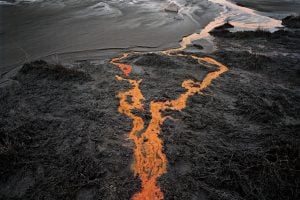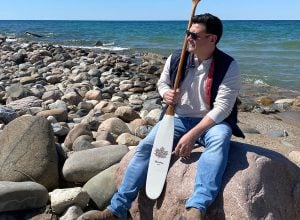On style
If you’re a naturalist, what matters is particularity. It matters that an immature red-tailed hawk has a particular look. It’s a bit like a rough-legged hawk, but it isn’t a rough-legged hawk. The difference between the two, like the difference between the bill lengths of the downy woodpecker and the hairy woodpecker, matter.
I’m probably 51 per cent artist and 49 per cent naturalist. If I have a dispute between art and nature, I let art win. But I wouldn’t want to paint a picture of a bird that was inaccurate. It would go against my grain.
Dalí said: “There is no cheating in art.” It’s an interesting and serious statement. There is forgery in art — one can easily do a fake Mondrian. Or a Modigliani, for that matter. It wouldn’t be that easy to do a fake Andrew Wyeth. But that’s breaking the law.
When one paints, you can put a stamp on a scene. You can make minor adjustments, make it weird, cubist or whatever. But you cannot judge realism against the decorative. It’s a complex thing. People might think it has to do with morality or ethics. I don’t agree. It’s a question of taste. There is nothing more moral or righteous about either.
Nature has none of those qualities either. Only change is implicit in nature, by which I mean coming and going, getting old, life and death. I’m looking out the window now at a hundred-year-old apple tree. It’s a russet apple, which isn’t produced commercially. It has all kinds of shape and character, with branches falling off. It’s still producing excellent apples. There are five or six apple trees here that are older than I am, and will be here longer than me, too.
On mice
Possibly the most important years in my life were the three years I spent at the wildlife research station in Algonquin Park at Lake Sasajewun, a job I got by fluke. It changed my life. I was like Kipling’s Brer Rabbit, bred and born in the briar patch. I felt I was bred and born to be in a wildlife research camp, studying the distribution of jumping mice or censusing birds.
Later, I worked a summer in Ungava, the little bite out of Northern Quebec. I was a mouse trapper looking for eastern heather vole, Phenacomys ungava. There are only two Phenacomys ungava [specimens] in all the museums of the world — and I caught about 85 of them that summer.
I have mice all over the world. There are mice with a little label saying “Robert Bateman, 1953,” or some such year, in the Royal Ontario Museum, the Chicago Field Museum, the American Museum of Natural History, the British Museum, and the Smithsonian. They’ll be around long after I’m gone. If I go down in history, it could be through my mice.








